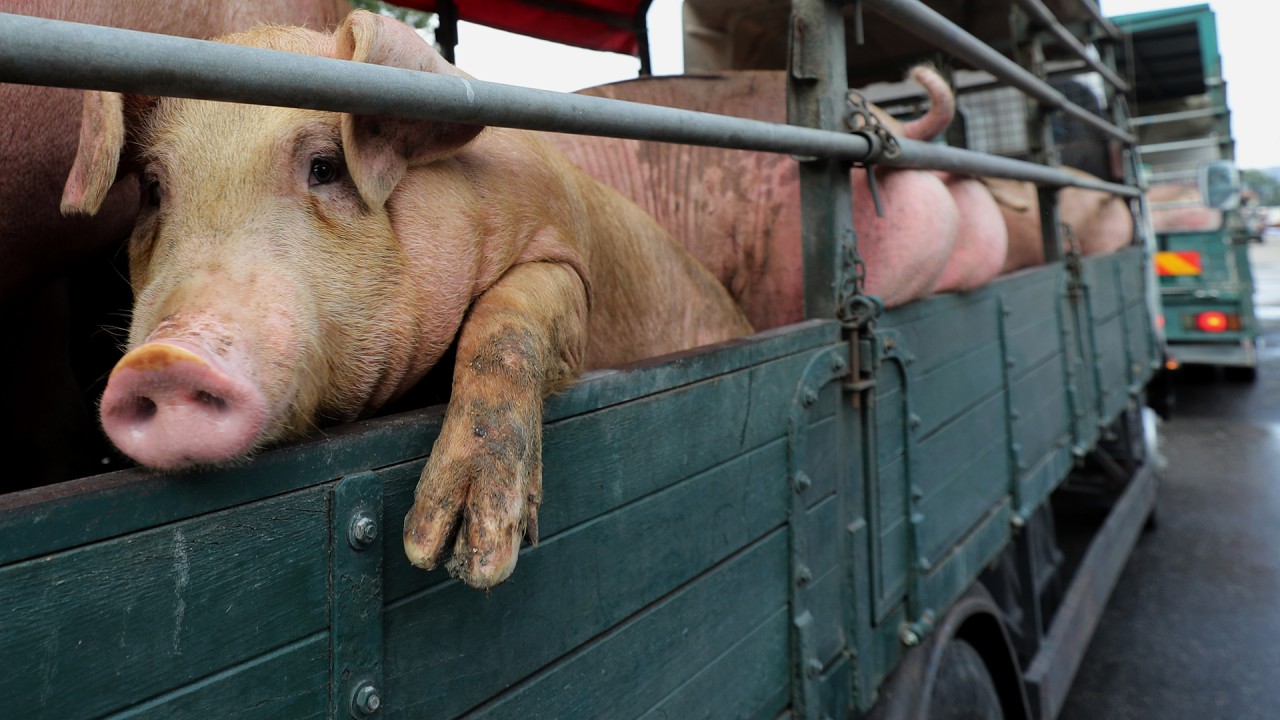
China fine-tunes pork reserve system as panic selling and sluggish demand send prices tumbling
- Pork prices have fallen more than 50 per cent since mid-January amid sluggish demand and panic selling due to new African swine fever outbreaks
- To combat the price volatility and stabilise production, Beijing announced it would improve its monitoring of the market and tap strategic pork reserves
Plummeting prices for China’s favourite meat mean a lot of the pigs that trader Zhang Yu is seeing in the market these days are supersized, or at least a little overweight.
“If they sell at the current price, they will certainly lose money,” said Zhang, who lives in a small town in the northeastern province of Liaoning.
“Many pigs weigh more than 150kg now,” he said. “If you sell one below 150kg, the money you get can’t even cover the expense of buying a piglet.”
The price of pork in China, the world’s leading consumer, has plunged more than 54 per cent since mid-January, touching 21.5 yuan (US$3.4) per kilogram as of last Friday, according to data from the Ministry of Agriculture and Rural Affairs.
To combat the price volatility and stabilise production, the government announced this week it would improve its monitoring of the market and tap its pork reserves.
The National Development and Reform Commission (NDRC) said on Wednesday it would start keeping track of the number of breeding sows in a herd and the average retail price of pork in major cities.
It also raised the hog-to-grain ratio, which takes the price of a pig and divides it by the cost of the corn needed to feed it, to reflect higher production costs among farmers.
The NDRC, China’s top economic planning agency, said the new system would help fine-tune its early warning system, which alerts it to changes in the market so it can manage price volatility through its pork reserves.
First established in 1979, China’s meat reserves are designed to allow the government to respond to emergencies that cause abnormal market fluctuations.
The NDRC also said on Wednesday it would significantly increase its stocks and set up a temporary reserve to regulate prices by buying from the market when prices are too low, and releasing supplies when prices are too high.
After the African swine fever outbreak, the general expense of the whole industry has greatly increased
Farmers are also offloading pigs as prices decline and hot summer weather suppresses consumers’ appetites, said Cao Hui, an analyst from market intelligence provider Sublime China Information (SCI).
Millions of small farmers, who account for more than half of the total pork production of the country, have been hard hit by the plummeting prices, according to analysts.
“After the African swine fever outbreak, the general expense of the whole industry has greatly increased,” said Feng Yonghui, chief analyst at meat industry portal Soozhu.com.


